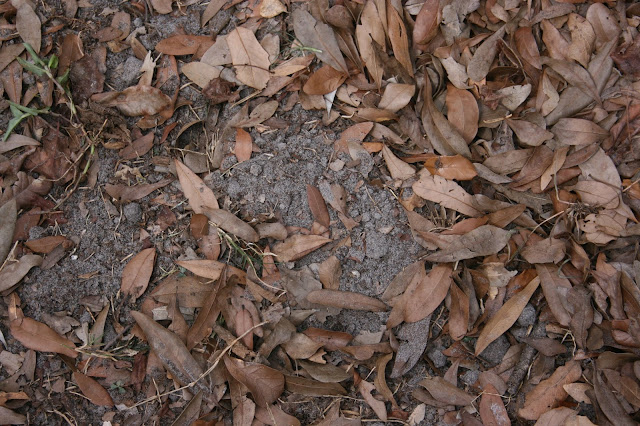You Have To Feed Your Soil
 |
| Leaf mulch in my backyard woodland |
Soils are complex organisms that include a great many living components. Soil bacteria and nematodes, for example, are extremely important in how plants respond. While many of my earliest gardening advice would say things to the contrary, the vast majority are crucial to a plant's well being. Nematodes and soil bacteria are largely beneficial. In fact, the vast majority are necessary for plants to reach their full potential. Other invertebrates, like earthworms also play a role in a plant's relationship to the soil.
Most significant, however, is the suite of mychorrizal fungi found beneath the soil surface. A lot has been written lately about their role in plant communication, but they also are critical in enabling a plant's roots to efficiently pull water and its dissolved nutrients off of soil particles. If a plant's root hairs could be thought of as your fingers, the mychorrizal network that forms a relationship with them could be thought of as strands of hair. Their fine fibrous network is super efficient in pulling water into the plant and it makes a plant significantly more drought tolerant. A plant growing in potting soil, regardless of fertilizer, will never grow as strong as one planted directly into fertile soil. It has nothing to do with fertility; it has everything to do with the living components found in the natural soil itself.
Overworked soil tends to have a far poorer collection of mychorrizal fungi, bacteria, and nematodes and soil routinely treated for "pests" has far fewer still. It takes a community to build strong plants and this cannot be done in landscapes treated with fungicides and pesticides. What also should be apparent, is that we should be feeding our soil to improve the conditions that these living organisms need. I'm doing this the best way I know how in my developing woodland. I'm mulching the understory with leaves. The leaves of deciduous trees do a lot of positive things for a landscape, but most importantly, they feed the living components of the soil as they decompose. I am feeding the fungi, bacteria, and nematodes that my plants depend on. This is not done with mulches that are not designed to decompose. Woody mulches may be good for walkways and other high-travel areas, but they are anathema to the health of my plants. Pine needles are good, but the leaves of deciduous trees are better.
It will take a few years for a true woodland soil to develop beneath my planted woods, but I was lucky to have inherited a soil to begin with that was not severely disturbed. As my trees and shrubs get older, they will self-mulch this area each fall. Until then, I will collect the fallen leaves from other landscapes and use them to feed my soil - and, ultimately, my plants.



Comments
Post a Comment